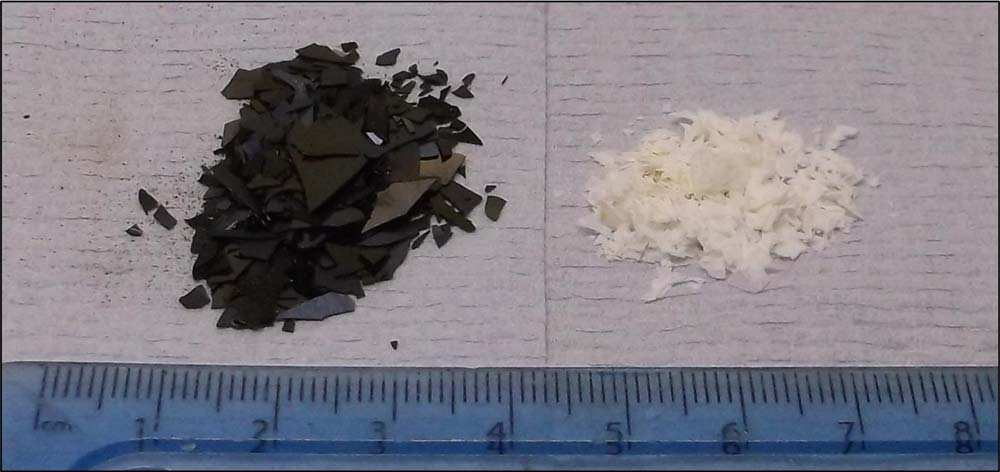Passivation of the internal surface of porous silicon (pSi), where the reactive hydride-terminated bonds are replaced with a more functionally-stable species, is a pre-requisite for the majority of perceived applications (with the notable exceptions of pSi-based energetics and hydrogen storage). Of the passivation techniques that can be readily-applied to pSi membranes and powders, thermal oxidation has been the most common; under static sample/furnace conditions, this has been shown to be highly-exothermic and can result in a large degree of sintering and pore collapse.1 The classical lattice expansion model predicts that both pore volume and size would be decreased on oxidation of the silicon network, although this could be compromised by pore closure/collapse. The unexpected increase in average pore size actually observed1,2 suggests that sintering may be predominant (especially-so for large batch sizes), with negative implications for both process scale-up and maximum loading of an active compound into the oxidized pSi structure.
Liquid-phase oxidation shows promise as an alternative to thermal oxidation, with oxidants such as dimethyl sulfoxide,3 nitric acid,4 and hydrogen peroxide5 being effective; sodium nitrite has also been used, with the associated oxidative lattice expansion facilitating trapping of Cobamine and Rhodamin G.6 In the present study, we discuss the liquid-phase oxidation of ‘free-standing’ (detached from parent substrate) pSi membranes using the chemistry surrounding dilute lye (sodium hydroxide) and alcohol, at room temperature.
Aqueous sodium hydroxide (NaOH), in typically molar concentration, can be used to etch pSi completely from the surface of a wafer,7 a particularly useful characteristic for applications where the porous layer is considered as sacrifificial. Rates of pSi corrosion in NaOH and potassium hydroxide (1 M solutions), and associated activation energies, have been determined by weight loss measurements, at various temperatures, with additives such as ethanol/methanol and isopropyl alcohol being used to either increase or reduce the degree of etching.
Porous silicon layers were prepared on Czochralski-grown, [100] p-type substrates (150 mm diameter, Boron-doped, 0.005 cm- 0.02 cm resistivity) by electrochemical anodization in 40% hydroflfluoric acid and methanol (1:1 by volume); current densities and times were chosen to yield either medium (63%) or high porosities (> 80%) and layer thicknesses >150 µm. Each layer was detached from the substrate immediately after anodization, whilst wet, by applying a high current density pulse (130 mA/cm2 , 10 s duration). The detached membranes were subsequently rinsed in MeOH and vacuum-dried at 50◦C for several hours, then manually fragmented into small pieces (< 5 mm2 ).
0.1 M (pH13) and 0.01 M (pH12) NaOH solutions were prepared by serial dilution from 1 M (pH14) stock. MeOH was pipetted onto the as-anodized hydrophobic pSi, in measured volume, to facilitate wetting and to allow the subsequently-added aqueous NaOH solution (suffificient to completely cover the membranes) to enter the pore structure; the solutions were stirred (300 rpm) to ensure homogeneity; a thermocouple was used to measure the maximum temperature of each solution. After a pre-determined time, each sample was separated from the solution, sequentially rinsed (de-ionized water then methanol) and dried (vacuum oven for several hours at 50◦C).

Fig1
The as-anodized, hydrophobic, membranes were rendered hydrophilic by the chemical oxidation process, akin to thermal oxidation. For thermal oxidation, it is known that the color of pSi can evolve from dark brown to light brown, depending on the temperature reached, and that a grey to off-white color may result if the structure is converted to a porous oxide.1 With the chemical oxidation process, the color of 63% porosity pSi gradually changed to light brown only after longer immersion times (>10 min), indicating that signifificant elemental silicon remained.
High-porosity pSi.— For higher porosity pSi, where the pore skeleton is thinner, it is not unreasonable to assume that the majority of the elemental silicon may be converted to porous silica during chemical oxidation; this is evident in Fig. 1, for 89% porosity pSi, where the color was transformed from dark brown to white (after drying); being more mechanically fragile at higher porosity, the flflakes were reduced in size due to continual contact with the stirrer bar during oxidation; mesoporosity was maintained, although signifificant reductions in surface area, pore volume and average pore size accompanied oxidation: from 514 m2 /g to 387 m2 /g, from 2.533 ml/g to 0.908 ml/g, and from 19.5 nm to 9.2 nm, respectively.
上一篇: 通过旋涂工艺在金刚石上制造凹面微透镜
下一篇: 湿清洗后晶圆旋转速度对金属线的影响